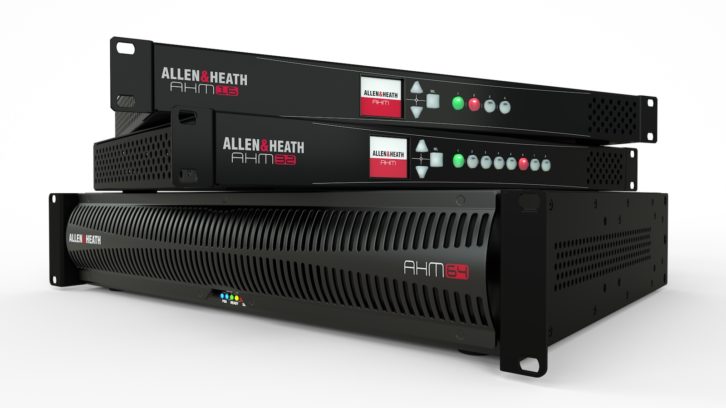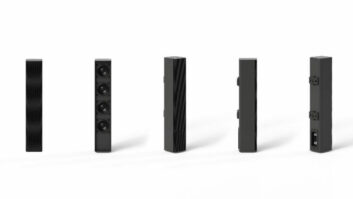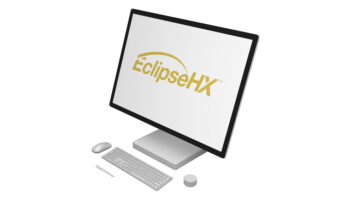
This article originally appeared in the February 2022 issue of Mix. Innovations is a monthly column in which different pro audio manufacturers are invited to discuss the thought process behind creating their products of note. Nicola Beretta is Head of Product for Allen & Heath.
When we launched the AHM-64 in early 2020, we summed up the product with the tagline “Rethinking the Matrix.” During its design process, we consciously sought to do just that—rethink how contractors, installers, system designers, consultants and audio engineers could best apply the traditional audio processing matrix paradigm in new and innovative ways. A key element to that thought process related to the interconnectivity of matrix devices to other components within the audio ecosystem.
Out of this exercise, it became apparent that we could take the range of applications for audio matrixes to the next level via what we termed our “Everything I/O” ecosystem. Sure, we’d offer the usual wall-mount XLR I/O options and support transport of digital audio with popular protocols like Dante. But AHM-64 also offered plug-and-play connection to more “live sound” style I/O stage boxes like our DX168 and rackmount I/O “Swiss Army knife” units like the DX012, alongside support for our proprietary audio transport protocols, direct compatibility with Waves, dedicated Allen & Heath touch panels to configure and control those inputs and outputs, and more. As we continued to expand this world of I/O and connectivity and control for AHM-64 in the last two years, the next step became obvious—add new AHM processing units to the mix.
With the launch of the AHM-16 and AHM-32, we’ve done just that. The AHM-32 is built on a 32×32 processing matrix with 12 local analog inputs and outputs, making it an ideal choice for multi-room installations in hospitality, corporate and education environments. The AHM-16 features a 16×16 processing matrix with eight local analog inputs and outputs. Out of the box, the AHM-16 is particularly well-suited to single-room applications and smaller multi-room environments, including bars, restaurants, shops and school halls. Both units bene it from a 96 kHz I/O port for audio expansion and networking, enabling access to the “Everything I/O” ecosystem.
Furnace Fest 2021 Heats Up
Bringing in new, scaled down AHM units sounds easy enough, right? Just shave a few bits off of the AHM-64 and call it a day? Well, not quite. While we had already scaled our XCVI technology down from our flagship 128-channel, 64-bus dLive system to the compact 48-channel SQ range of mixers, a few new challenges immediately popped up. A key AHM- 16 and AHM-32 design choice was to reduce the physical size to a single rack unit. That brought in thermal risk, which required careful consideration of airflow and ventilation. Smaller fans typically equate to louder noise. With a lot of work, we were able to get the new products to pass our harshest thermal tests and were pleased to measure as little as 30 dBA of acoustic noise with AHM-32 at ambient temperature.
Another common requirement of smaller projects was to minimize the need for extra hardware, particularly controllers. We decided to keep the 2×2 onboard GPIO, but went a step further by integrating a front-panel LCD display and user-assignable buttons so that a number of functions, including volume control, preset selection and source selection, can all be handled without investing in additional equipment.
What was the biggest challenge in designing the AHM-16 and AHM-32? By far, it was in the architectural changes from a separate FPGA processor and CPU module to a SoC (system on a chip) solution for efficiency and cost optimization. We also wanted to maintain shared software code and a common System Manager application across the three products, meaning the shared code would now have to talk to a completely different interface. As if that weren’t enough of a technical ask, the programming language also needed new modules to cope with the added front-panel display. In the end, it was well worth the effort, as we can now provide a consistent experience to installers and end users, with portability of the configuration or channel libraries across models; the same user interface and processing tools; and a shared ecosystem of Custom Control apps, networkable IP controllers and audio expanders in all shapes and sizes—rack-mountable, modular, wall-mounted, portable—running either on our ultra-low latency proprietary Layer 2 protocols or Dante. We started the AHM line with a careful rethinking of just what an audio matrix can do. AHM-16 and AHM-32 represent the next step in that continuing journey.







